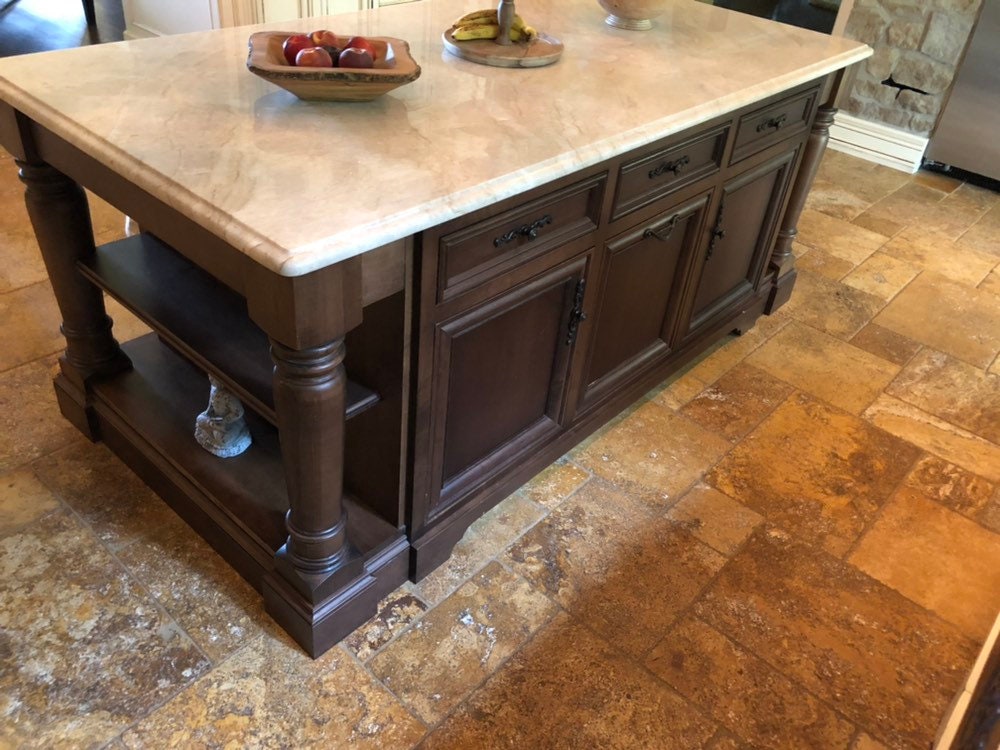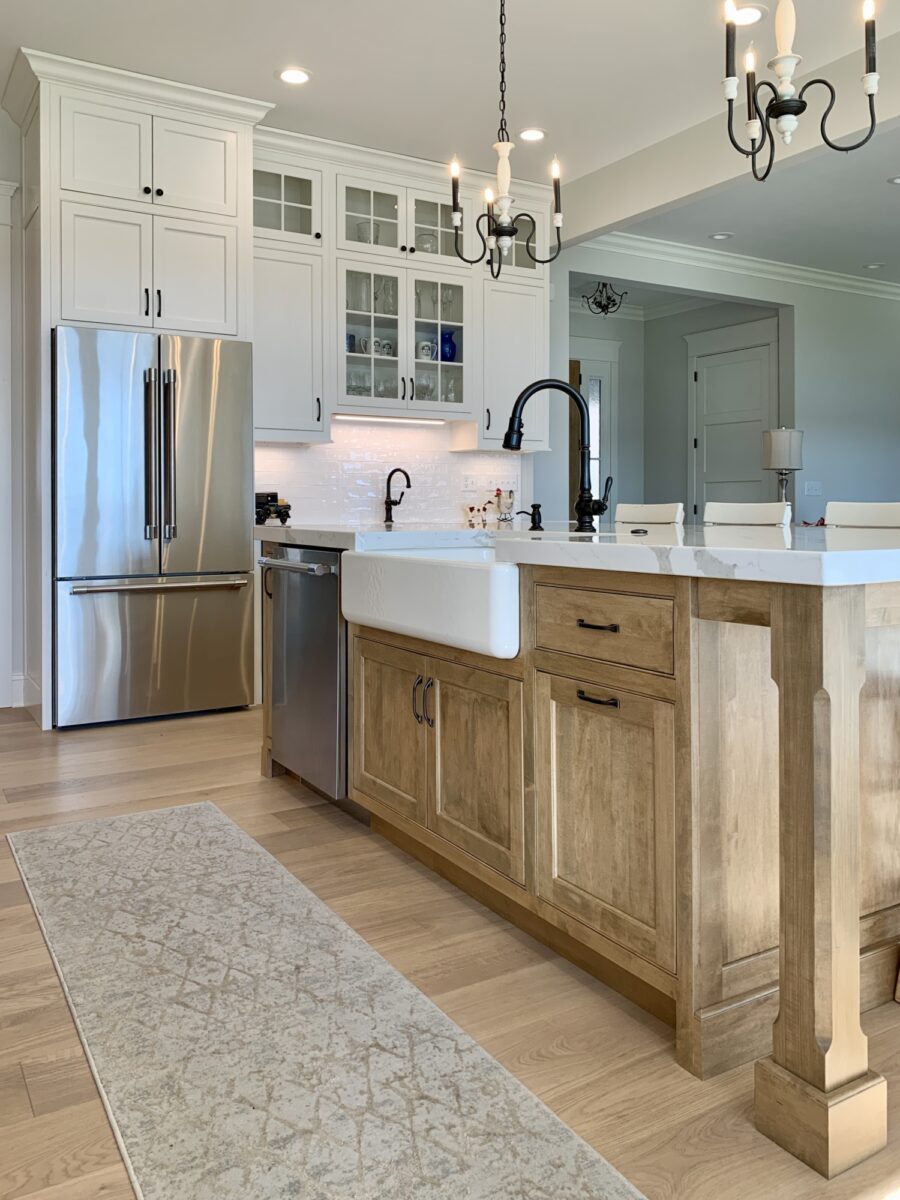A Guide to Choosing the Ideal Kitchen Area Island for Your Home
Comprehending your kitchen's spatial dynamics is the preliminary action, guaranteeing that the island fits flawlessly without disrupting the circulation. The selection of coatings and products likewise plays a crucial role in balancing the island with your cooking area's overall design.
Analyzing Your Space
Prior to picking a cooking area island, it is vital to completely examine your area to make certain the addition will certainly be both practical and visually pleasing. Begin by determining the readily available area, including the width, length, and elevation of the kitchen area. Exact dimensions are crucial to stay clear of acquiring an island that bewilders the space or one that is overmuch small.
Think about the existing design and just how the island will integrate with the present web traffic circulation. A well-placed island needs to not block pathways or hinder access to crucial appliances, such as the fridge, cooktop, and sink. Leave sufficient clearance space-- generally around 36 to 48 inches on all sides-- to allow for comfy movement and workspace efficiency.
Next, evaluate the natural light and sightlines within your kitchen area. An island that obstructs a home window or disrupts aesthetic communication can make the area really feel confined and dark. Assume about how the island's placement will certainly impact illumination and exposure, ensuring it enhances instead than takes away from the kitchen's ambiance.
Establishing the Objective
Establishing the objective of your cooking area island is an essential action in ensuring it meets your particular needs and choices. Before diving into style or size factors to consider, it is essential to clarify what main feature the island will certainly serve in your kitchen area. Will it be a central center for dish prep work, a laid-back dining location, or potentially an added storage option?
For those who enjoy food preparation, incorporating devices such as a cooktop or sink may be needed. In addition, enough counter space for chopping and mixing, together with obtainable storage for kitchen devices and ingredients, can change the island right into an efficient workstation. Alternatively, if the island is planned to promote social communications or serve as a dining area, seating setups end up being extremely important. In this situation, making sure adequate legroom and surface location for comfy dining experiences is important.

Choosing the Right Size
Selecting the appropriate size for your kitchen island is a balance of functionality and space optimization. A perfect kitchen area island must provide adequate office while making certain that movement around the cooking area continues to be unimpeded. Begin by determining your kitchen area space; a minimum clearance of 36 to 42 inches around the island is necessary to allow for comfortable motion and ease of access.
The dimensions of the island should reflect its desired usage. For example, if the island will serve primarily as a prep area, a size of 24 to 36 inches might be adequate. If it is to accommodate seats, you must consider a larger dimension, usually gauging at least 48 inches in width. Islands dedicated to sinks or appliances might need extra room to house these attributes effectively.

Last but not least, guarantee that the dig this island's size complements the total kitchen area format, staying clear of any kind of frustrating existence that could diminish the cooking area's visual and energy - kitchen island legs. Cautious planning and precise measurements will assist you achieve a unified and efficient kitchen atmosphere
Deciding On Materials and Finishes
After identifying the ideal dimension for your kitchen area island, the following step involves choosing ideal materials and coatings. The selection of products dramatically influences both the aesthetic appeal and functionality of your kitchen island. Popular materials for kitchen counters consist of granite, quartz, and butcher block, each offering unique advantages. Granite, recognized for its longevity and ageless elegance, is highly immune to scratches and warmth. Quartz, an engineered rock, supplies a non-porous surface area that resists microorganisms and stains. Butcher block, made from wood, adds a cozy, rustic beauty and is optimal for food prep work.
In addition to the counter top, consider the materials for the space station. Strong wood provides a traditional, durable appearance, while stainless-steel provides a sleek, modern-day look and is simple to tidy. Repainted finishes can present a sprinkle of color, with choices varying from muted pastels to strong, vivid colors.
Pay interest to the resilience of coatings, particularly in high-traffic areas, to keep the island's look over time. Choosing the right materials and surfaces will boost both the functionality and aesthetic appeal of your cooking area island.
Including Practical Functions
Including functional features right into your kitchen island can significantly enhance its utility and ease, transforming it into like it a versatile centerpiece of your cooking area. One vital function to think about is added storage. Integrating cabinets, drawers, and open shelving can provide much-needed room for kitchenware, tools, and tiny home appliances, assisting to preserve a clutter-free atmosphere.
An additional important addition is a built-in sink or cooktop, which can streamline dish prep work and clean-up processes. A sink can help with jobs such as washing veggies and cleansing dishes, while a cooktop can enable cooking straight on the island, cultivating a much more interactive and social food preparation experience.
Take into consideration including seating browse around this web-site alternatives, especially if your cooking area functions as a casual dining location. Bar stools or integrated benches can change the island right into a multifunctional room for meals, research, or laid-back events.
Finally, incorporating electric outlets right into your cooking area island can boost its usefulness. Outlets offer practical gain access to for tiny kitchen appliances, charging terminals for digital tools, and additional illumination alternatives.
Final Thought

Prior to selecting a kitchen area island, it is necessary to extensively assess your space to make sure the enhancement will be both practical and cosmetically pleasing.Selecting the ideal dimension for your kitchen island is an equilibrium of functionality and room optimization. kitchen island legs. A suitable cooking area island should supply enough work area while ensuring that activity around the kitchen stays unblocked.Incorporating practical functions right into your kitchen island can substantially enhance its utility and convenience, changing it into a flexible focal point of your cooking area.In final thought, picking the optimal cooking area island demands an extensive assessment of the readily available area, quality regarding its main feature, and mindful factor to consider of the suitable dimension and products